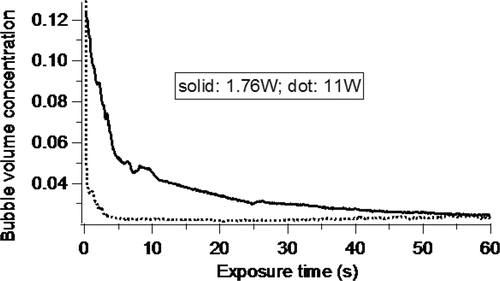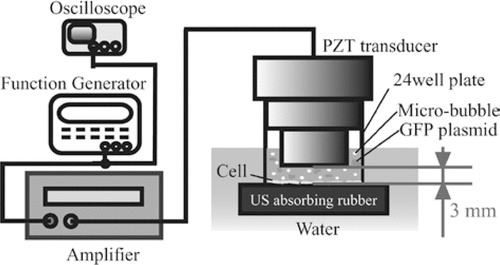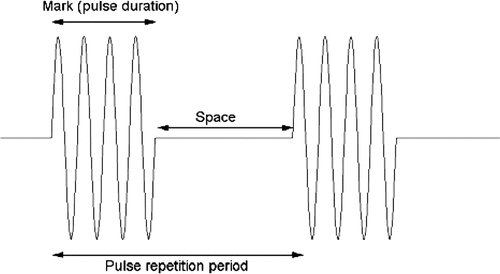Figures & data
Figure 3. Acoustic pressure field measured with needle hydrophone. (A) Hydrophone placed 3 mm away from the transducer. Max, maximum value of signal recorded, i.e. peak positive pressure; Min, minimum value (absolute value of min is also called the peak negative value). (B) Hydrophone placed 6 mm away from the transducer. +, 24-well plate positioned between the hydrophone and the transducer; –, no 24-well plate positioned between the hydrophone and the transducer.

Table I. Sonazoid® bubble density at different volume concentrations.
Figure 4. Confirmation of gene transfection rates at different bubble volume concentrations. US intensity 1.76 W/cm2, burst duty ratio 10%, pulse repetition frequency (PRF) 5 kHz, insonation time 60 s. (A) was obtained with 10% microbubble volume concentration on a fluorescent microscope. The data is averaged from three independent replicates (12 samples) and shown as the mean ± standard deviation.
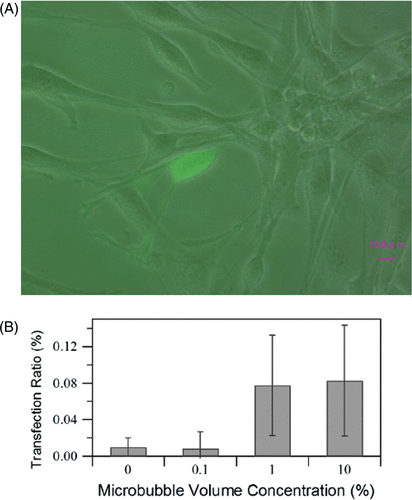
Figure 5. Effects of US intensity on (A) GFP transfection rate and (B) cell viability measured immediately after exposure. Burst duty ratio 10%, pulse repetition frequency 5 kHz, insonation time 60 s, microbubble concentration 10%. The data is averaged from three independent replicates (12 samples) and shown as the mean ± standard deviation.
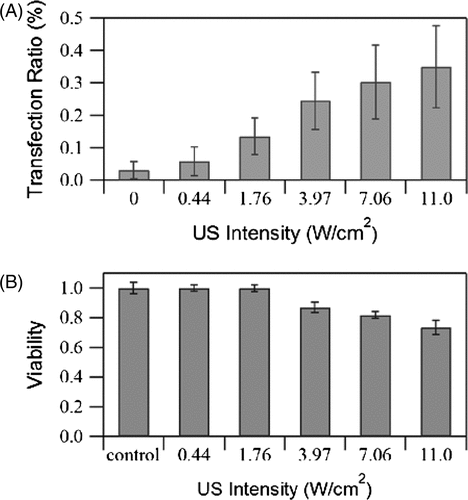
Figure 6. Effects of PRF on (A) GFP transfection rate and (B) cell viability measured immediately after US exposure. US intensity 4.94 W/cm2, burst duty ratio 10%, insonation time 60 s, microbubble concentration 10%. The data is averaged from three independent replicates (12 samples) and shown as the mean ± standard deviation.

Figure 7. Effects of duty ratio on (A) GFP transfection rate and (B) cell viability measured immediately after exposure. US intensity 4.94 W/cm2, pulse repetition frequency 5 kHz, insonation time 60 s, microbubble concentration 10%. The data is averaged from three independent replicates (12 samples) and shown as the mean ± standard deviation.
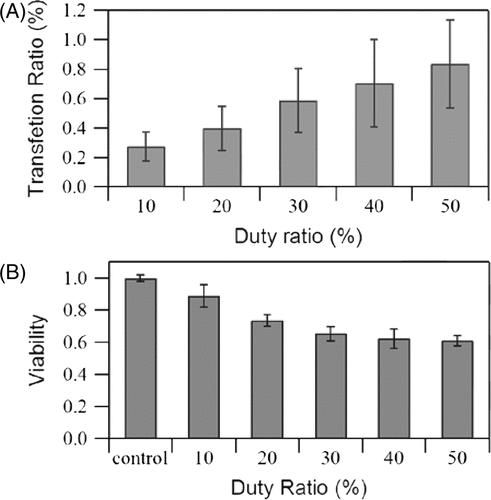
Figure 8. Effects of irradiation time on (A) GFP transfection rate, and (B) cell viability measured immediately after exposure. US intensity 1.76 W/cm2, burst duty ratio 10%, pulse repetition frequency 5 kHz, microbubble concentration 10%. The data is averaged from three independent replicates (12 samples) and shown as the mean ± standard deviation.
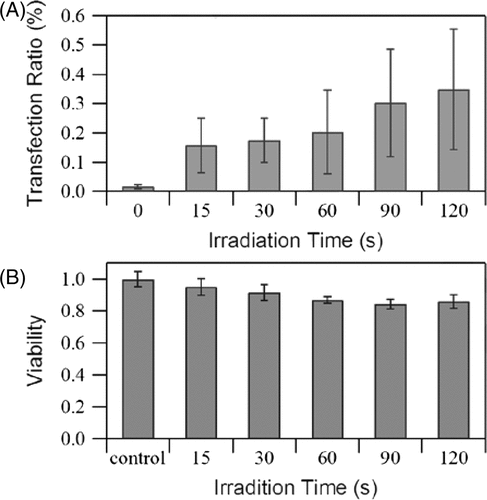
Figure 9. Effects of duty ratio with fixed energy on (A) GFP transfection rate and (B) cell viability measured immediately after exposure. US intensity 4.94 W/cm2, pulse repetition frequency 5 kHz, microbubble concentration 10%. Corresponding duty ratios and insonation times are 10% 60 s, 20% 30 s, 30% 20 s, 40% 15 s, 50% 12 s. The data is averaged from three independent replicates (12 samples) and shown as the mean ± standard deviation.
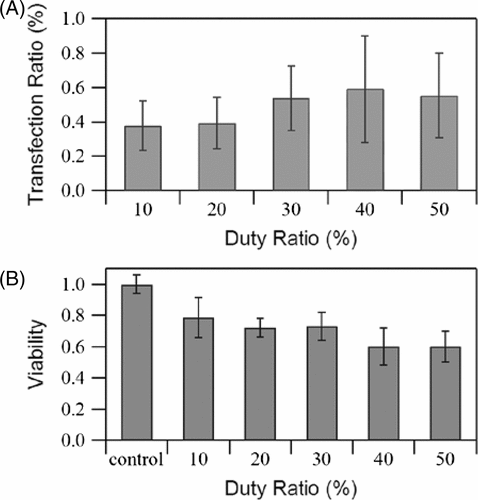
Figure 10. Parametric space containing the results of all treatments. Central frequency 2 MHz, microbubble concentration 10%. The data is averaged from three independent replicates (12 samples) and shown as the mean ± standard deviation.
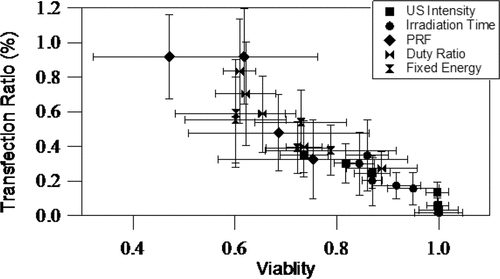
Figure 11. Change in volume concentration of microbubbles during 60 s exposure at two intensities. Central frequency 2 MHz, initial microbubble concentration 10%. US intensity, 1.76 W/cm2 and 11 W/cm2 (dotted line for 11 W/cm2 and solid line for 1.76 W/cm2), pulse repetition frequency 5 kHz, insonation time, 60 s.
